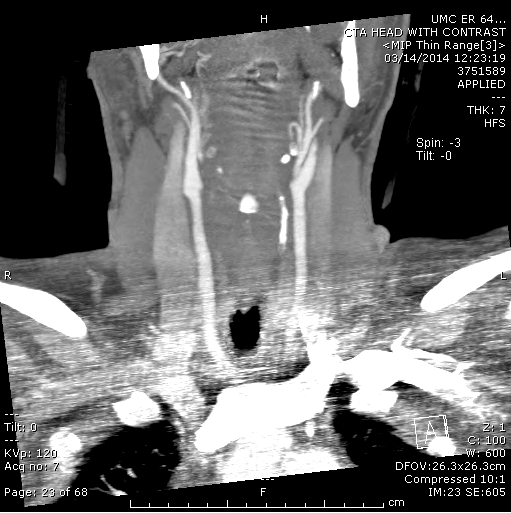Many of you have probably heard me discuss my love of paraspinous blocks for migraine headaches, and I know several of you have learned how to do them on me when I have a migraine. This seems to be one of those slightly voodoo things that I would have sworn could never work, until I tried it and had almost immediate relief when several traditional abortive therapies failed.
For those who haven’t, this is an incredibly easy procedure that takes a minimal amount of time and can give real relief in migraine patients. There is no complicated anatomy involved, no significant technique or skill level required, and is safe enough that I have talked many novices through the procedure on a patient with supervision.
To do the block, the most important part is selecting the correct patient to increase your chances of success. Technically it won’t hurt anyone to do a block on them, but I’ve quickly learned this has a near zero chance of working in patients who state only an IV cocktail of dilaudid and phenergan works for their migraines. I’ve also found minimal effects on those who are texting while under bright lights and listening to music. I have had the most success on patients that look absolutely miserable: the ones curled up into a fetal position, actively vomiting, crying, with all the lights out and begging you to do ANYTHING to make their headaches go away. These people also tend to be quite enthusiastic about a treatment that you can administer on the spot and will work within 5-10 minutes typically. For all the things we do that sometimes have fairly minimal objective evidence of relief, it makes me very happy to walk back into a room in 20 minutes and see this previously miserable patient looking completely normal, stating their headache has resolved, and being ready to discharge… all without medications from pharmacy or an IV.
I typically use bupivicaine and do not use any subcutaneous lidocaine as the youtube video attached at the end of this post shows. I draw up 3cc, planning to use 1.5cc on each side. Your landmarks will be your C6 or C7 spinous process. I typically go C7 because it is easy to find by asking patients to flex their chin to their chest, and I like to keep things easy. C7 is the most prominent spinous process at the base of the neck. Not sure if you’re at C6, C7, or T1? Even better, for this block it doesn’t really seem to matter because it still works! You’ll be injecting approximately 2cm laterally to the edge of the spinous process, give or take half a centimeter based on body size. Again, don’t get too caught up in the details- it seems to work at 1.5cm to 3cm laterally to the process. After a swipe with an alcohol prep (bonus points- you can hand the patient another alcohol prep pad to inhale for relief of their nausea and vomiting! See last week’s journal club article for more details), you’ll insert the needle (any size, but a 25g hurts less) parallel to the ground in a straight anterior tract. I insert the needle 1.5-2cm. Aspirate to make sure you aren’t in a vessel, then inject 1cc of bupivicaine deep, and the remaining .0.5cc while withdrawing your needle. Repeat on the opposite side, stick a bandaid on, and reasses in about 20 mins. If it’s going to work, most seem to start to get significant relief in about 10 mins. If unchanged in 20ish minutes, I proceed to other therapies.
When I’m in first care, I typically will take a bottle of bupivicaine and a needle/syringe into the room when I walk in for an initial evaluation. If the patient seems to be a good candidate and is agreeable, I go ahead and do the block at that time. By the time I do my charting or see the next patient, I typically have a good idea of if the patient has improved, or rather if I need to start ordering other therapies.
Quick and easy, and I have about a 60-75% success rate on patients. Pretty good considering a standard migraine patient will likely take a couple of hours to receive IVFs, meds and reassess. You can sometimes get these people dispo’d in less than 30 minutes!
I’ve attached a quick video for you visual learners
![Room9er ["Room Niner"]:](https://room9er.com/wp-content/uploads/2020/03/cropped-Screen-Shot-2020-03-08-at-3.16.16-PM.png)
